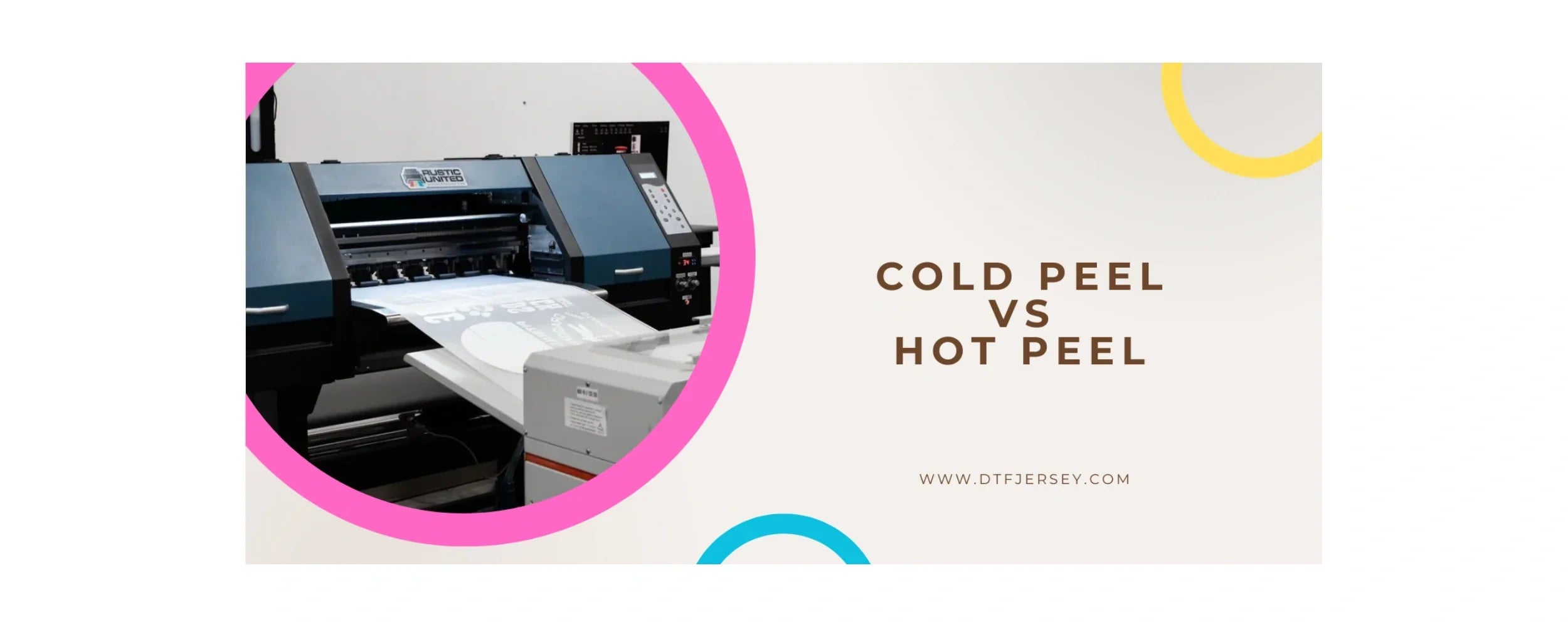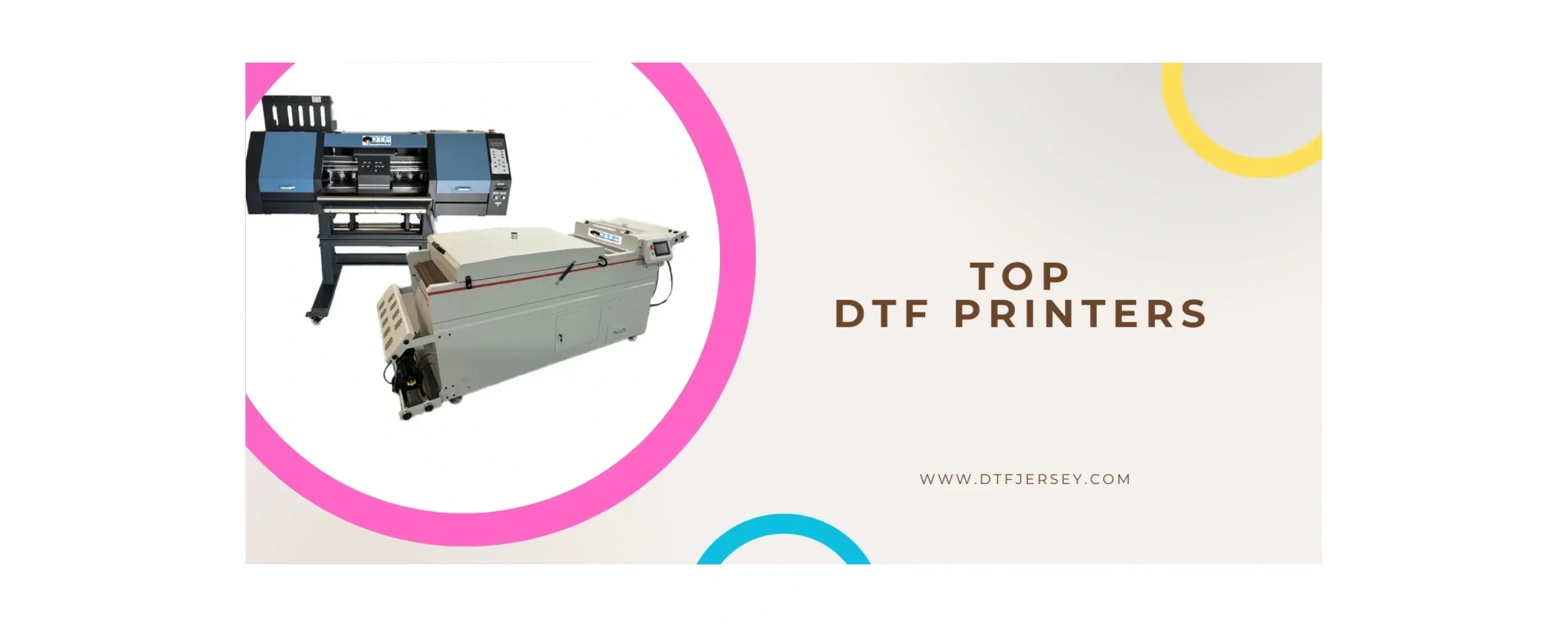
Cold Peel vs Hot Peel in DTF Printing: Key Differences
Cold peel vs hot peel are two basic methods that determine the time at which the transfer film is removed from the print in the DTF printing process. The methods have an impact on the quality, durability, and production speed of the print. In the cold peel method, the transfer film is removed after the print has completely cooled.
The hot peel method, on the other hand, involves separating the film while the print is still hot. Both techniques have their advantages and disadvantages. Therefore, the choice of the appropriate method depends on the purpose of the process and the fabric to be used.
What is Cold Peel in DTF Printing?
The cold peel method involves removing the transfer film after it has completely cooled in DTF printing. The method offers advantages in terms of preserving delicate print details and making colors appear more intense. Once the film has cooled, the ink and adhesive layer are fully bonded to the fabric, reducing the risk of scratching, cracking, or color fading.
In the DTF cold peel vs hot peel comparison, the cold peel technique is generally recommended for designs with high-resolution graphics and fine details. Although the cooling time in this method slightly slows down production speed, it is preferred for projects with high print quality expectations.
How Does Hot Peel Work in DTF Printing?
Hot peeling is the removal of the transfer film while it is still hot after printing is complete. The application steps are as follows:
- The printed transfer film is removed from the heat press.
- Without waiting, the film is quickly peeled off by holding it from the edge.
- The printed surface is immediately revealed and left to cool.
The hot peel method saves time in mass production, but the surface texture and color consistency may be brighter and slightly rougher compared to the cold peel method. In the comparison between DTF cold peel vs hot peel, the reason hot peel is preferred in high-volume production is entirely due to this speed advantage.
Which Peel Method Gives Better Print Quality?
There are significant differences between cold peel and hot peel in terms of print quality. In this regard, the cold peel method is generally considered superior in terms of the clarity of fine details and the smoothness of color transitions. On light-colored fabrics and designs with high detail density, cold peel printing provides a more photographic quality appearance.

Hot peel, despite its fast production advantage, can sometimes cause issues such as slight blurring or ink bleeding along the edges. However, this difference can be minimized with the right print film and ink combination. In cold peel vs hot peel DTF comparisons, it is widely believed that cold peel has a slight edge in print quality, but hot peel leads in practicality.
Cold peel is more suitable for customers with high-quality expectations or premium product lines. For promotional products or orders requiring quick delivery, hot peel is a reasonable choice.
Does Cold Peel Affect Durability Compared to Hot Peel?
In terms of durability, cold peel vs hot peel directly affects how strongly the print adheres to the fabric. At this point, the cold peel method allows the ink to harden completely during cooling and the binder to penetrate the fabric fibers better. Therefore, it has higher wash resistance and color fastness.
In hot peel, however, since the film is separated while the ink is still hot and flexible, there is a slightly higher risk of cracking or peeling in the upper layers of the print over time compared to cold peel. Nevertheless, this difference can be largely mitigated with high-quality hot peel films and proper temperature settings. As well as this, for long-term use, frequent washing, or outdoor textiles, cold peel is a more sensible choice, while hot peel is more suitable for short-term promotional products.
Is One Peel Method Faster than the Other in DTF Printing?
Hot peel saves time because it does not require waiting after printing. It can provide advantages in minutes or even hours for large-scale orders. In cold peel, however, there is a mandatory waiting period until the film cools down.
This process takes a few minutes in warm conditions and longer in cold conditions. The waiting time can slow down the flow of production lines. In DTF printing trying processes, businesses prioritizing speed often opt for hot peel. However, cold peel has a strong place in quality-focused production.
How Do Cold and Hot Peel Affect the Transfer Process?
In the hot peel method, the protective layer is removed from the surface while it is still hot, immediately after the transfer printing process is completed. This method is ideal for manufacturers who want to achieve glossy surfaces and vivid colors. In the cold peel technique, the surface is allowed to cool completely after printing is completed. This feature provides a matte texture, softer, and more durable print surface.

When conducting a comparative evaluation of transfer technologies, the film vs. cold peel comparison is a critical benchmark in terms of print quality, production speed, and ease of application. Film-based hot peel techniques offer the advantage of fast production, while cold peel methods excel in terms of detail accuracy and longevity. Therefore, manufacturers can achieve optimal results both aesthetically and functionally by selecting the most suitable technique based on the purpose of the printing project and customer expectations.
Are Certain Fabrics Better for Cold Peel or Hot Peel?
The type of fabric used in cold or hot peeling methods is critical in terms of the quality and durability of the transfer. Cotton, polyester, or blended fabrics can produce different results depending on their response to heat and pressure. At this point, different hot peel techniques enable clearer and more vibrant prints on fabrics that are heat-resistant and have a smooth surface. In contrast, the cold peel method typically yields better results on non-stretch, plain-weave fabrics.
What are the Main Issues with Cold Peel or Hot Peel in DTF Printing?
When comparing cold peel vs hot peel, the most common problem with cold peel is that the print is damaged because the film is peeled off before it has cooled sufficiently. In addition, the slow production speed is a disadvantage for businesses. In hot peel, issues such as cracking at the edges, ink bleeding, or increased surface gloss may occur during rapid peeling at high temperatures. This situation can also reduce quality in detail-intensive prints.
Most of these issues can be prevented by properly adjusting temperature, time, and printing pressure settings. DTF Jersey determines the most suitable method by conducting DTF cold peel vs. hot peel tests before each project.
FAQs
Keep scrolling down to explore other frequently asked questions.
Is Hot Peel or Cold Peel Better?
Hot peel is preferred by professionals over cold peel because it provides more vivid and clear results when peeled immediately after printing.
How Do I Know If My Vinyl is Hot Peel or Cold Peel?
You should check the manufacturer's instructions to determine the peeling method for your vinyl.
How to Know if DTF is Hot or Cold Peel?
The most reliable way to determine whether a DTF print will peel hot or cold is to review the manufacturer's instructions and pay attention to the transfer film's cooling time and surface response.
How Long to Wait for a Cold Peel?
You should wait until the transfer paper has cooled completely.
Is Cold Peeling Effective?
The cold peeling method in DTF transfer is an effective way to achieve professional results while maintaining the brightness and durability of the print.
Do I Cold Peel HTV?
Peeling HTV when cold ensures that the design is completely fixed to the fabric and will last a long time.
References;
- https://www.dtflinko.com/dtf-film-hot-peel-or-cold-peel-film
- https://www.transfersuperstars.com/blogs/wtf-is-dtf-transfer/the-ultimate-guide-to-dtf-transfers-cold-peel-vs-hot-peel-dtf-transfers
- https://www.problanks.com/blogs/news/dtf-printing-made-easy-a-hot-peel-guide-for-beginners
- https://www.dtfnc.com/blogs/dtf-insider/hot-peel-application-instructions
- https://digitechfm.com/hot-vs-cold-vs-super-peel-dtf-film-which-is-best-for-your-printing-needs/
- https://www.picassoprintdtf.com/blogs/dtf-guide/cold-peel-vs-hot-peel
- https://ninjatransfers.com/pages/difference-between-hot-and-cold-peel-dtf-transfers
- https://www.silhouetteschoolblog.com/2022/07/htv-hot-peel-vs-cold-peel-everything-to.html
- https://www.dtfnc.com/blogs/dtf-insider/how-to-cold-peel-dtf-transfers
- https://expressionsvinyl.com/blog/mastering-heat-transfer-vinyl-choosing-the-right-settings-and-peeling-techniques


